One’s spiritual journey is full of so many twists and turns, particularly if you are taking up the druid path. Druidry is a path that really focuses on individual relationships with the living earth, and thus, you will find a tremendous diversity of perspectives, beliefs, and practices. For new druids, the choices may be a bit overwhelming.
In AODA druidry, in particular, it is kind of like a choose-your-own-adventure book–we have a set of core practices and teachings, but most of the major choices about cosmology, diety, and so forth are left up to the individual. And of course, because we focused on place-based, localized, and wildcrafted druidry, the druidry practice of someone like me in the Allegheny Mountains in Western Pennsylvania, USA, is likely to be very different than the practices of someone living in Hawaii or Norway. Thus, in this post, we explore both how to make choices about important things as well as how to chart your overall journey.
But how do you decide what choices to make? And why is it important to take time to take stock in the journey–the journey you have taken and the journey that is still to come? In this post, we explore the idea of mapping your spiritual journey: reasons why you may want to, paths and steps to take, and work to move forward.
Reflection, the Conscious and Subconscious, and the Path to Individuation
A powerful tool for spiritual growth can be found through reflection and meditation on one’s past experiences leading to the present moment. Reflection allows us to take a breath and a break from the journey. Our legs can grow weary of ever taking us forward. So when we reflect, we take time to think about where we’ve gone, where we are now, and where we might go. We can pause for a time, resting, being, and existing in the moment of our life’s great spiritual journey.
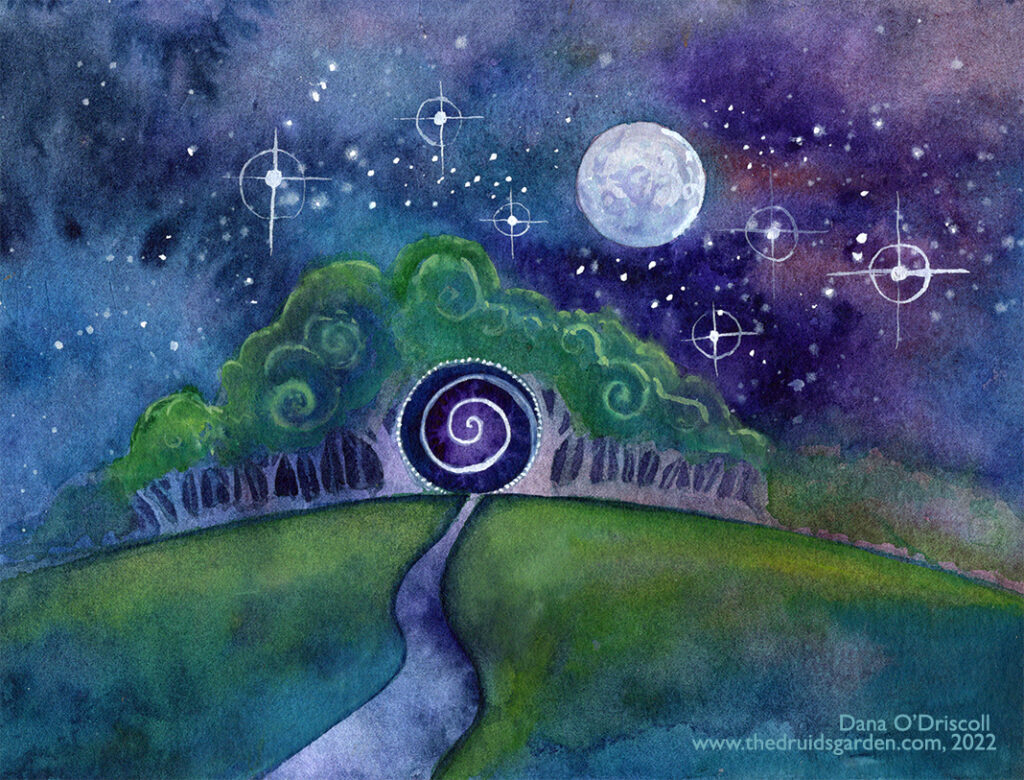 One of the reasons it is important to spend time in reflection is that it better helps us understand how our past experiences shape us, and how we might grow and heal from those experiences and develop wholeness. Carl Jung taught that we essentially have three aspects to our psyche: our ego, our subconscious, and our collective unconscious. Our ego is our personality, our reason and mental faculties, our perceptions, and all of that which we are aware of that make us unique individuals. Our subconscious is all of that which is not conscious but that influences and guides us, and may include our memories, thoughts, feelings, and even repressed or forgotten experiences. Often, our subconscious drives our behaviors, feelings, and what is made conscious, particularly if we do not address or deal with our past. Thus, it is useful in spiritual work that we work to understand the deepest ways in which we instinctively react–it is often here where spiritual lessons form, and thus, where we can grow and heal. The third category of consciousness is Jung’s collective unconscious, which is tied to being human–this is where symbols, archetypes, and other cultural and evolutionary conditioning exist and shape us (for example, all humans gravitate toward fire because we evolved with it for millions of years–this is a feature of humanity borne out of the collective unconscious). We won’t be getting into this third category much today, but the other two categories that are personal are quite useful.
One of the reasons it is important to spend time in reflection is that it better helps us understand how our past experiences shape us, and how we might grow and heal from those experiences and develop wholeness. Carl Jung taught that we essentially have three aspects to our psyche: our ego, our subconscious, and our collective unconscious. Our ego is our personality, our reason and mental faculties, our perceptions, and all of that which we are aware of that make us unique individuals. Our subconscious is all of that which is not conscious but that influences and guides us, and may include our memories, thoughts, feelings, and even repressed or forgotten experiences. Often, our subconscious drives our behaviors, feelings, and what is made conscious, particularly if we do not address or deal with our past. Thus, it is useful in spiritual work that we work to understand the deepest ways in which we instinctively react–it is often here where spiritual lessons form, and thus, where we can grow and heal. The third category of consciousness is Jung’s collective unconscious, which is tied to being human–this is where symbols, archetypes, and other cultural and evolutionary conditioning exist and shape us (for example, all humans gravitate toward fire because we evolved with it for millions of years–this is a feature of humanity borne out of the collective unconscious). We won’t be getting into this third category much today, but the other two categories that are personal are quite useful.
Part of what mapping and reflection can do is help us achieve what Jung calls individuation. Jung described individuation as the process that an individual goes through to come to a sense of wholeness and completeness by engaging in various kinds of work (spiritual work, creative work, meditation, etc.) to connect the consciousness with the unconscious. Individuation allows for self-actualization across the different domains of a person, including the physical, mental, philosophical, mystical, and spiritual areas of life.
In the Emerald Tablet of Hermes Trismegistus, a text from antiquity that offers a foundation in the occult and hermetic philosophy, it is written “That which Below corresponds to that which is Above, and that which Above corresponds to that which is Below, to accomplish the miracle of the One Thing.” A more modern translation of this ancient text is “as above, so below, as within, so without.” This concept, foundational to the study and practice of much western mysticism and occultism, has many interpretations and translations. We use this doctrine to establish why inner work is a critical goal for any spiritual path, druidry being no exception. Through inner work, such as the meditation practices and related self-focused practices presented here, one can use these tools to help develop spiritually and come into a place of wholeness.
Reflecting on the Journey of the Past
The first step of mapping out your journey is reflecting upon what has happened in the past. The past guides and shapes us, and it is the path we have walked to this present moment. It can be a very useful exercise to actually create a map–a map that helps us understand the twists and turns.
There are a few ways you might approach this work. One is to engage in a series of meditations, free writing, or other methods of exploring a series of related questions about the past you’ve experienced. If you aren’t willing to delve into some of these questions, this might be a place of deep trauma–and maybe at a later point, you will be willing after time has passed and things have healed. Dig into whatever of these questions you think might be useful to you as you begin to map your journey.
Past religious/spiritual experiences. It is useful to consider our past experiences with birth religions or previous religious experiences and how those have shaped our present. For many that are taking up the path of druidry, individuals have deep and complex relationships that are evolving with regard to past religious experiences. You might consider any of the following questions in exploring this aspect of your past:
- What was your relationship to religion or spirituality when you were growing up?
- How do you feel about that birth religion (or lack thereof) now as you are older?
- Has that past relationship (or lack of relationship) affected or shaped your practices now? in what way?
- Does the birth religion of your family impact how you are viewed (or have to hide) today as a druid?
Other past experiences and personality:
- What other aspects of yourself have been brought into clarity or developed further as part of your spiritual journey?
- Do you see synthesis in the various aspects of your life (personal, work, educational, public, community, family)? Do you see disconnections?
- What experiences deeply shaped your choice to be a druid?
- What experiences deeply shaped who you are as a person? Are these the same as the last question or different?
- Who have been important spiritual influences or teachers on your journey? (They don’t have to be spiritual teachers, but something that taught you something)
- What places have really been influential on your spiritual journey?
- What beings (plants, rivers, people) have been influential on your spiritual journey?
Motivations towards the present: It is useful to think about what currently drew you to the path you are on, and how it is working for you.
- What drew you to your current path (whether that is druidry or other neopagan or earth-based path)?
- What things are you certain of that you believe? Where are areas that are still evolving or uncertain?
- What are your core practices and why do you engage in those practices? How might you see them yet evolving?
- How do you define druidry? What does it mean to you?
Inspiration toward the future: It is also helpful to stand in the present moment and think about the future.
- What, if anything, do you hope to get out of your current spiritual journey?
- What, if anything, do you hope to gain as part of this journey?
- Is this path a lifelong path for you, a stop along the journey, unknown, or perhaps something else?
As you are reflecting, this can be helpful for you to take stock of who you were when you started this journey, where you are heading, and the growth you’ve had along the way. The above is particularly helpful for you to dig into the deep past and think about how things have shaped who you are today.
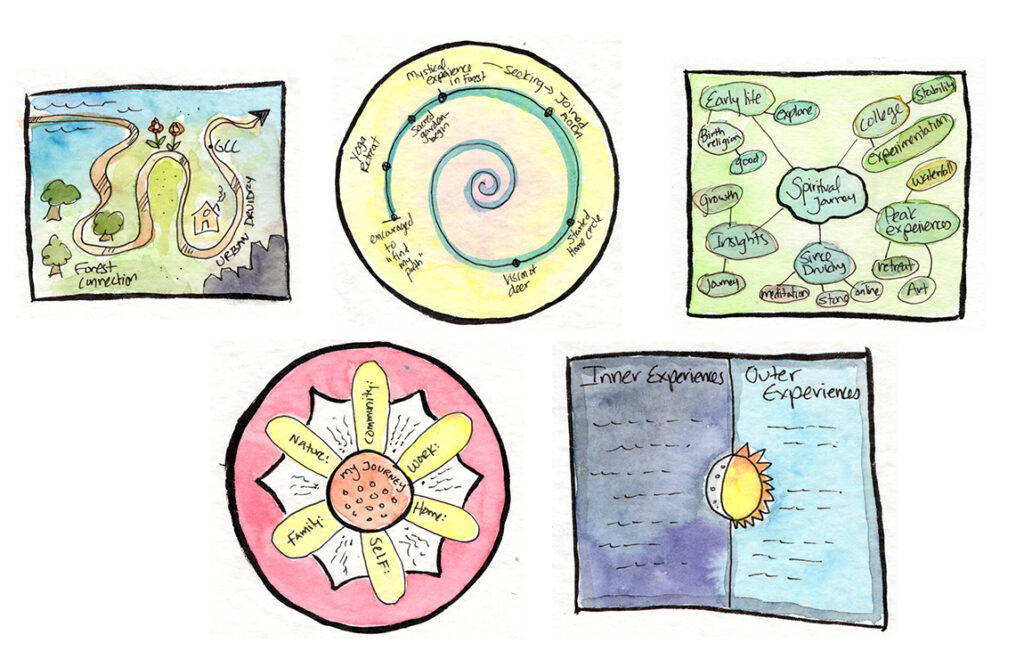
Reflection through Reading Past Spiritual Journals
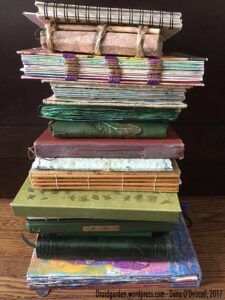
An alternative approach to this is one you can use if you keep a regular spiritual journal. This approach takes some time but it is very well worth it. In this approach, you take time and space to read through your old spiritual journals. If you have a few journals, this is easy. If you have many, it can be a bit more time-consuming but still worth it. In this case, what you will want to do is get all of your spiritual journals and first put them in order. You will want to read in chronological order. Do this in a quiet setting, maybe with a nice cup of tea or by candlelight. Think about who this person was who wrote it, and where you are now. Consider taking notes–what insights or themes do you see coming forth as you read? What are key shifts you see happening as you go through your journey? This approach is a powerful way to understand your spiritual journey, particularly if you like to journal and use that as a regular record.
I’m an avid journaler, usually filling 1-2 a year. Since I’m nearing year 18 of my druid journey, I had about 30 journals to read in order to do this work. I started reading in Dec 2020, working steadily on it, reading for a few hours a few times a month. I finished almost a year and a day later. A bit part of why it took me so long is that I decided that with 30+ journals, I didn’t want to necessarily read them all again anytime soon, but there was
Mapping the Journey to Come
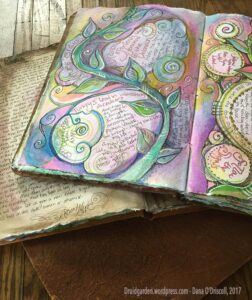
Reflecting on the past this way allows you to do a few things. First, it allows you to have a sense of how far you have come and there’s a lot of value in really bringing into consciousness your lessons, experiences, and insights that shape who you are as a spiritual being. Knowing who you are and how you’ve gotten here, and spending that time in bringing it into focus, helps you have a sense of what you have accomplished, what you are still working toward, and where you are heading next.
Some people very much appreciate setting goals, setting intentions, and making lists of what they would like to accomplish. Other people find that a little bit of this kind of work is helpful, but that there should also be room for spontaneity and creativity. So I’d say trust your own intuition here–how much you want to plan is really up to you. The other option here is if goals aren’t your style, setting some broader themes can be helpful.
If you are working through a course, like AODA’s curriculum, obviously, it is a good idea to plan for what you need to complete the curriculum. Most people also benefit from at least setting some longer-term goals, themes, or intentions. Goals should be both attainable and challenging in order to grow–set goals that may push you in directions you want to go but that you can actually accomplish as part of your journey. Themes can be more broad, just a sense of what you might want to spend some time on, but keeping what will actually be done or accomplished more nebulous. It can be very helpful for you to put up your goals, intentions, or themes somewhere that you can see regularly.
For me, I always go dark and do a 10-day spiritual retreat in the first part of January. As part of that retreat, I do a variety of different reflective activities, including many described in this post, and then set some goals or intentions moving forward. I do this on a yearly basis, and also take that time to reflect. As you move deeper into your spiritual practice, you may find it helpful to find some kind of regular time to do this too!
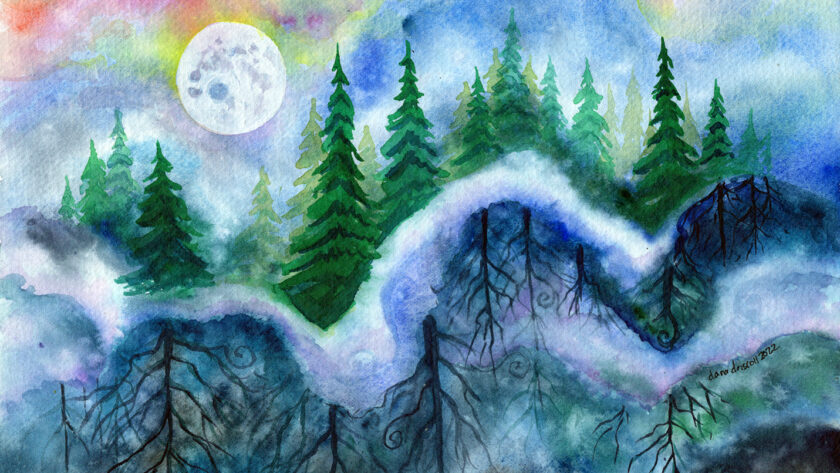



Dana, Thank you kindly for this valuable guide and insight into the journey. I so appreciate you sharing your wisdom
You are most welcome, Priscilla!
I hope this isn’t inappropriate to suggest someone else’s work, but I JUST received the 2023 Metaphysical Dayplanner by Benebell. I converted the PDF into a form so I can type rather than print and try to use a pen (my thumb is so deformed now from osteoarthritis I can’t write in a journal). I plan on inserting Yasmin Boland’s Moonology tips and YOUR Tree Oracle card picks for the day along with runes and whatever “crops” (pun intended). The Day Planner comes with artwork, palmistry sheets, I Ching, the Kabbalah’s Tree, and a few other paths. For me, it’s perfect because I can insert all other other paths I’ve explored.
Synchronicity strikes again because your blog post arrived within 48 hours of me posting on Facebook about Benebell.
That sounds pretty wonderful! And I love how you are adapting it to fit your needs :).
Thank you. It is helpful and has provided some impetus to move forward on this path.
You are most welcome! 🙂
This is a great map for anyone with a religious or spiritual practice, thanks for sharing.
Sure, thank you for reading! 🙂
Thank you for this post. I’m currently doing the Bardic course with OBOD. I kind of stalled for the last month or so due to loosing my Dad. So have taken this time to step back and I suppose reflect on my path. Those questions have really helped me sort through things. I’m know I’m on my right path. I think this post came at the right time for me.
Thank you
Heather Watson
🦋🙏🌻🧚♀️🇦🇺
Hi Heather,
I’m so sorry to hear about the loss of your father. I do think its important to recognize that the wheel of the year happens in our own lives and spiritual practices. There are fallow times and there are times of abundance. And its ok to allow these times when we need them. Blessings to you and your journey!
I love how the principles of walking the Druidic path are the same as walking other spiritual paths. And we are all walking our paths together. My annual reevaluation and goals setting comes in February, my birthday month and new year.
Hi Joanne, thanks for the comments. Would you be willing to share more about your annual reevaluation of goals? What do you do?